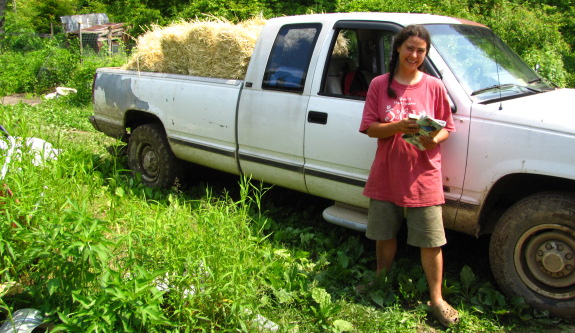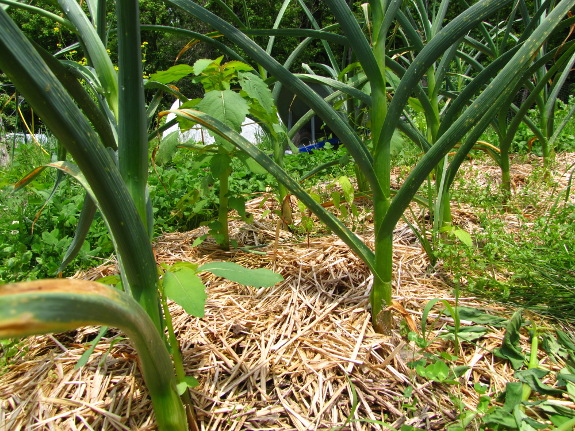
Straw mulching makes plants happy and healthy


Got another load of straw
bales today.
I was a bit leary of the tailgate
not staying closed and only purchased 15 bales instead of squeezing
in 18 like previous trips.
Mulching the garden with straw has turned out to be a major time
saver for us. I know some folks are worried about weed seeds that
sometimes come with a bale of straw, but from our perspective it's
worth a few weeds when you can see and feel how much healthier the plants
seem to be.
Want more in-depth information? Browse through our books.
Or explore more posts by date or by subject.
About us: Anna Hess and Mark Hamilton spent over a decade living self-sufficiently in the mountains of Virginia before moving north to start over from scratch in the foothills of Ohio. They've experimented with permaculture, no-till gardening, trailersteading, home-based microbusinesses and much more, writing about their adventures in both blogs and books.
Want to be notified when new comments are posted on this page? Click on the RSS button after you add a comment to subscribe to the comment feed, or simply check the box beside "email replies to me" while writing your comment.

Phil --- You're totally right. I think that most people who complain about weedy "straw" are confusing it with hay. We do tend to get a few sprouts, but they're grains and easy to rip out of the ground. Good to hear that even hay (at least prairie hay) isn't very hard to deal with.
Jeremy --- Way, way too much --- $5.50 per bale. That's mainly why I have a big expanse of wheat growing in one chicken pasture --- in hopes of making my own straw.
Debbi --- I think that real gardeners are actually growing earth, not plants, and straw definitely helps with that.
Wouldn't heating hay make any seeds unviable? I can think of at least two possibilities;
Both should be able to get rid of any harmful organisms next to making any seeds unviable. The flip side of the coin is that it would also kill any benevolent organisms. And it uses energy. The second method would require much less energy, given the high specific heat of water.